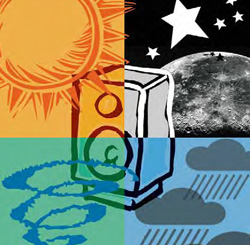
More & Less
Humidity is another factor that can produce large changes in sound system propagation but this time in the frequency domain.
Although it can seem counter-intuitive, lower humidity equals more attenuation and higher humidity equals less.
Humidity effects on frequency response start at about 2 kHz and become progressively more pronounced at higher frequencies.
At a distance of 100 feet and 20 percent humidity, 2 kHz will be attenuated by only 1 dB, while 10 kHz will suffer a whopping 8.5 dB loss.
And these losses are cumulative for longer distances. At 200 feet, that 10 kHz loss doubles to 17 dB! These losses are also in addition to inverse square law losses – they’re not linear with frequency, so amplitude response can vary greatly over the coverage area.
The inconsistencies are worst between 10 percent and 40 percent humidity. At higher humidity, the losses become smaller and also more linear across the frequency range.
These variations can be an issue with arrayed point sources that have a total vertical dispersion of 50 to 80 degrees. But when the forces of nature are applied to a line array with a wave front that is very narrow in the vertical axis, there is not much room for errors in directivity.
The fact that line arrays maintain their vaunted 3 dB loss per doubling of distance for a far greater distance at high frequencies than at low frequencies is somewhat offset by the higher atmospheric losses at those high frequencies. But because humidity losses are not linear this isn’t as helpful as it might seem.
Line arrays are also typically used to cover larger venues. The phenomena we’re examining here become more pronounced with distance.
The more air that the sound waves have to travel through, the more opportunity there is for mischief. At 100 feet, the effects are noticeable. At 500 feet, they can be dramatic.
Prime Weapon
So how do we overcome all this atmospheric mayhem? One way is to use delayed stacks. But that’s so 20th century, you say – haven’t line arrays made them obsolete? Not necessarily.
Getting people closer to the loudspeakers is a prime weapon in the temperature and humidity wars. Not only do we preserve a reasonable facsimile of the desired frequency response, we keep a much more even volume level over a large area.
